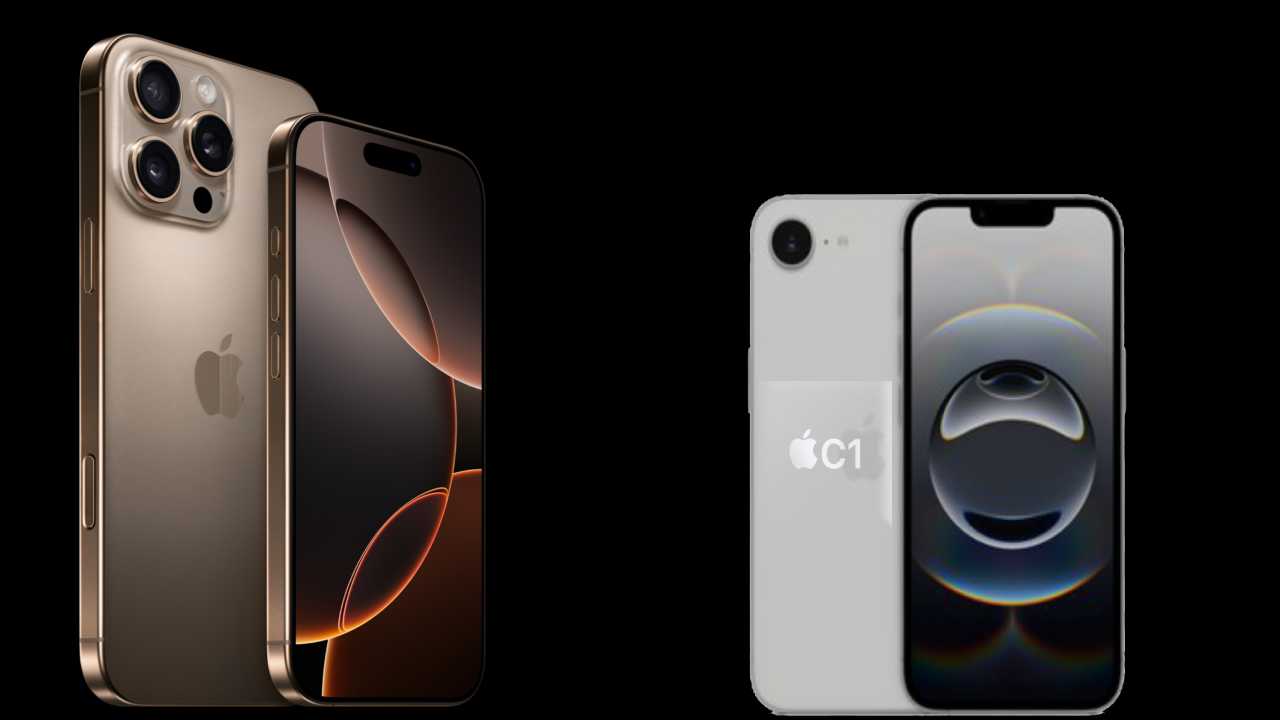
Apple’s foray into the affordable smartphone market continues with the E series, a successor to the SE line. While the price point of the latest model, the iPhone 16e, has faced scrutiny for creeping away from true affordability, and the device has been criticized for certain compromises such as its screen refresh rate and single-camera system, a recent internet speed test has unveiled a surprising advantage. The test results suggest that the iPhone 16e, powered by Apple’s in-house C1 modem, boasts faster internet download speeds compared to the flagship iPhone 16 Pro Max, which utilizes Qualcomm’s Snapdragon X71 5G modem.
The introduction of the C1 modem marks a significant step for Apple, representing its first foray into designing and manufacturing its own modem technology for its smartphones. Despite being the company’s inaugural attempt, the C1 modem appears to be performing exceptionally well, achieving notable success in a relatively short period. While Apple is already looking ahead to the future with plans to introduce the C2 modem in the upcoming iPhone 18 series, the current performance of the C1 modem is generating considerable buzz within the tech community.
Currently, the iPhone 16 series predominantly relies on Qualcomm’s 5G modems for connectivity. Despite the proven capabilities of Qualcomm’s technology, the independent test conducted by a popular tech Youtuber has revealed a surprising edge for the iPhone 16e and its Apple-designed C1 modem. The Youtuber’s video directly compared the internet speeds of the iPhone 16 Pro Max and the iPhone 16e, utilizing the widely recognized Speedtest platform for accurate and unbiased results.
The test pitted the Snapdragon X71 5G modem in the iPhone 16 Pro Max against the Apple C1 modem in the iPhone 16e. The results were striking, showing the iPhone 16e achieving internet download speeds that were a staggering 40 percent faster than the iPhone 16 Pro Max. This outcome is particularly noteworthy considering that the Snapdragon X71 5G modem incorporates mmWave technology. mmWave technology is known for its potential to deliver even higher speeds and broader network coverage, providing users with a more robust and seamless internet experience. The Apple C1 modem, despite lacking this advanced mmWave capability, managed to outperform its competitor in the download speed test.
Apple plans to incorporate the C1 5G modem into the upcoming iPhone 17 Air model. However, after these astonishing internet speed test results, many consumers and industry watchers are wondering whether Apple may consider expanding the deployment of the C1 modem to other models in the iPhone 17 series. While the C1 modem showcases promising advancements in modem technology, the absence of mmWave technology remains a potential concern, particularly in countries like the USA, Canada, Japan, China, and the UK, where mmWave networks are more prevalent and offer significant benefits to users. Given the importance of mmWave support in these regions, it seems unlikely that Apple would completely abandon Qualcomm modems in its flagship iPhone models in the near future.
The substantial speed difference between the iPhone 16e modem and the iPhone 16 Pro Max modem raises questions about the underlying factors contributing to this performance disparity. Understanding these factors is crucial for both consumers and Apple, as it could influence future design decisions and purchasing considerations. Whether it’s due to superior software integration, unique hardware optimization, or other unknown variables, the performance of the C1 modem has undoubtedly captured the attention of the tech world.
The unexpected performance of the iPhone 16e raises an important question: Is the superior internet download speed offered by the Apple C1 5G modem, on its own, sufficient to justify purchasing the iPhone 16e? This is a complex question that requires careful consideration of various factors, including individual user needs, priorities, and budget. While faster internet speeds are undeniably beneficial for activities such as streaming videos, downloading large files, and playing online games, other factors, such as camera quality, display technology, battery life, and overall user experience, also play a significant role in the overall value proposition of a smartphone.
For users who prioritize internet speed above all else, the iPhone 16e may represent an appealing option. However, those who place greater emphasis on other features, such as a high-resolution display, advanced camera capabilities, or longer battery life, may find that the iPhone 16 Pro Max, despite its slightly slower internet speeds, offers a more compelling overall package.
Ultimately, the decision of whether or not to purchase the iPhone 16e hinges on individual priorities and preferences. While the C1 modem’s impressive internet download speeds are undoubtedly a compelling selling point, they must be weighed against other factors to determine if the device aligns with one’s specific needs and expectations. It remains to be seen whether Apple will capitalize on the success of the C1 modem by integrating it into future iPhone models, or if the company will continue to rely on Qualcomm for its flagship devices. Regardless, the emergence of Apple’s in-house modem technology has undoubtedly shaken up the smartphone industry and sparked a renewed focus on the importance of connectivity in the modern mobile experience. The developments surrounding the C1 modem and its potential impact on future iPhone models will be closely watched by consumers, analysts, and competitors alike.
